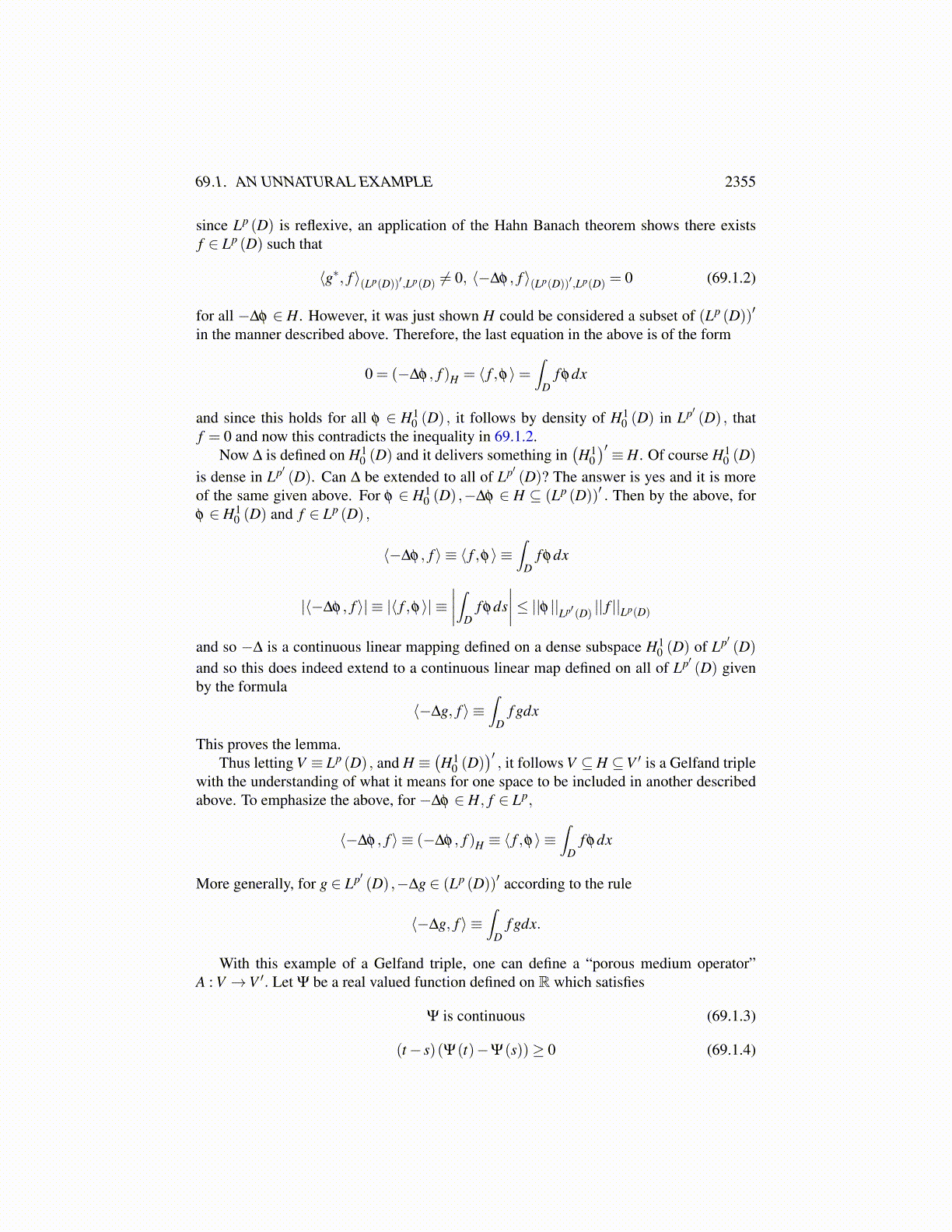
69.1. AN UNNATURAL EXAMPLE 2355
69.1 An Unnatural ExampleRecall Gelfand triples are of the form
V ⊆ H ⊆V ′
where H is a Hilbert space and V is a Banach space contained in H and each of the aboveinclusions is continuous and each space is dense in the next one. The standard example ofa Gelfand triple is H1
0 (D) ⊆ L2 (D) ⊆(H1
0 (D))′ with the convention that L2 (D) is identi-
fied with its dual space. Thus for f ∈ L2 (D) , f is considered as something in(H1
0 (D))′
according to the rule⟨ f ,φ⟩ ≡ ( f ,φ)L2(D)
This is a very pleasant thing to contemplate and it is natural and transparent. However,there are other ways to come up with a Gelfand triple which are much more perverse. Thefollowing is an example of such a thing along with an application. See [108] and referencesgiven there.
First consider the following situation.
X θ→ Y
where θ is continuous, linear and one to one and X is a Banach space. Then θ (X)⊆Y andyou could define
||θx||θ(X) ≡ ||x||X .
Then θ (X) can be considered the same thing as X because θ preserves distances and allalgebraic properties. Thus people write X ⊆Y to save space. In the above simple example,it is obvious what θ is. This is because the things in H1
0 and things in L2 are both functionsdefined on D and we can simply take θ to be the identity map. However, you might have Hbe the dual space of something. Thus it consists of bounded linear transformations definedon some Banach space. Then it becomes necessary to specify the manner in which vectorsin V can be considered as vectors of H.
Let ∞ > p ≥ 2. Then letting D be a bounded open set, H10 (D) embedds continuously
into Lp′ (D). That is||φ ||Lp′ ≤C ||φ ||H1
0. (69.1.1)
Here 1p′ +
1p = 1. Also note that an equivalent inner product on H1
0 (D) is
( f ,g)H10≡∫
D∇ f ·∇gdx
Then with respect to this inner product, the Riesz map is given by −∆.
−∆ : H10 (D)→
(H1
0 (D))′
Thus a typical vector of(H1
0 (D))′ is of the form−∆φ where φ ∈H1
0 (D) and the followinghold.
(φ ,ψ)H10≡ ⟨−∆φ ,ψ⟩ , (−∆φ ,−∆ψ)
(H10 )′ ≡ (φ ,ψ)H1
0= ⟨−∆ψ,φ⟩